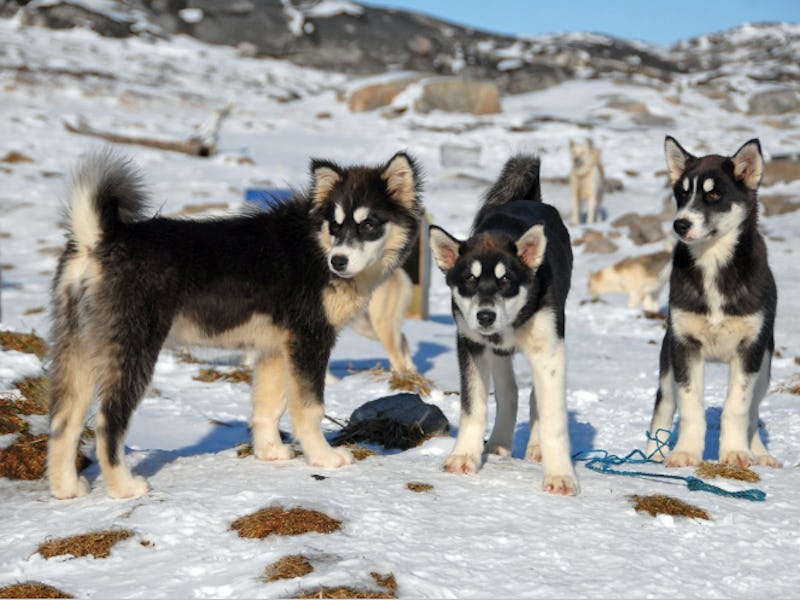The Dogs of America Were Not Descended From Wolves, Scientists Reveal
There's no longer such a thing as an all-American dog.

In the 15th century, Europeans brought war, slavery, and diseases to the New World. They also brought a lot of European pooches, which turned out to be deadly. According to a study published Thursday in Science, this wave of colonialist pets caused the rapid and near-total disappearance of the very first American dogs, who once ruled the continent.
This new history of American dogs refutes a longstanding theory about the origin of dogs in the Americas. Scientists previously theorized that American dogs — technically called “pre-contact dogs,” as in “before European contact with the New World” — were domesticated from North American wolves. This may have seemed evident to owners of wolf-like Arctic breeds, like the Alaskan malamute or the Canadian Eskimo dog.
The decimation of indigenous American pups, the authors explained in a statement released Thursday, is likely due to the combined effects of diseases, cultural persecution, and biological changes. Greger Larson, Ph.D., co-author on the new study and Oxford University researcher, says the new paper demonstrates how “the history of humans is mirrored in our domestic animals” and that, “just as indigenous people in the Americas were displaced by European colonists, the same is true of their dogs.”
A ritual burial of two dogs at a site in Illinois near St. Louis.
The new study, a comprehensive genomic analysis of 9,000-year-old dogs, recently excavated in Illinois as well as other ancient dog fossils found in North America and Siberian sites, revealed that these dogs actually originated in Siberia and crossed into the New World alongside ancient humans. Whatever indigenous dogs did exist in the Americas did not make it to the modern era.
The team sequenced a total of 71 mitochondrial genomes (the DNA stored inside specialized organelles called the mitochondria) and seven nuclear genomes (regular DNA from the cell nucleus) from dog remains, dated from the present day to the last 9,000 years. The bones found in Illinois, representing the oldest specimens, most likely originated in Siberia, the researchers write.
Approximately 16,000 years ago, humans arrived in Beringia from Eastern Siberia during the Last Glacial Maximum, entered into what is now Canada, and subsequently populated the Americas.
“Archeological evidence has long suggested that ancient dogs had a dynamic history in the Americas, but the fate of these pre-contact dogs and their relationship to modern American dog populations was largely unknown,” Durham University archeologist and co-author Angela Perri, Ph.D., explained in a statement. “Our study confirms that they likely originated in Siberia, crossing the Bering Strait during initial human migrations.”
Using nuclear genomic analysis, the scientists also determined that the closest-related relatives to these early American dogs includes modern Arctic dogs like Alaskan Malamutes, Alaskan Huskies, and Greenland dogs — as well as Siberian Huskies. Dogs typically associated with the Americas, like Labradors and Chihuahuas, are descended from European breeds that were transported to the Americas between the 15th and 20th centuries.
Living Alaskan Malamutes belong to a sister clade of ancient American dogs.
While the team notes it’s possible that degrees of pre-contact dog ancestry could be found in living American dogs, the only “living” genetic evidence that has been found so far exists in the form of a worldwide transmissible cancer. Canine transmissible venereal tumors are a form of sexually transmitted canine cancer: These scientists believe the disease stemmed from a genetic mutation that lived within a North American dog that lived 8,225 years ago. The tumor cells that exist today carry a copy of that original DNA.
“The cancer genome we found was a real surprise,” co-author and anthropology professor Anna Linderholm, Ph.D., said in a statement. “It is amazing to think that these cancer cells spread and that they still exist all over the world. So in a weird way, the ancient dogs of America live on through these cancerous cells.”